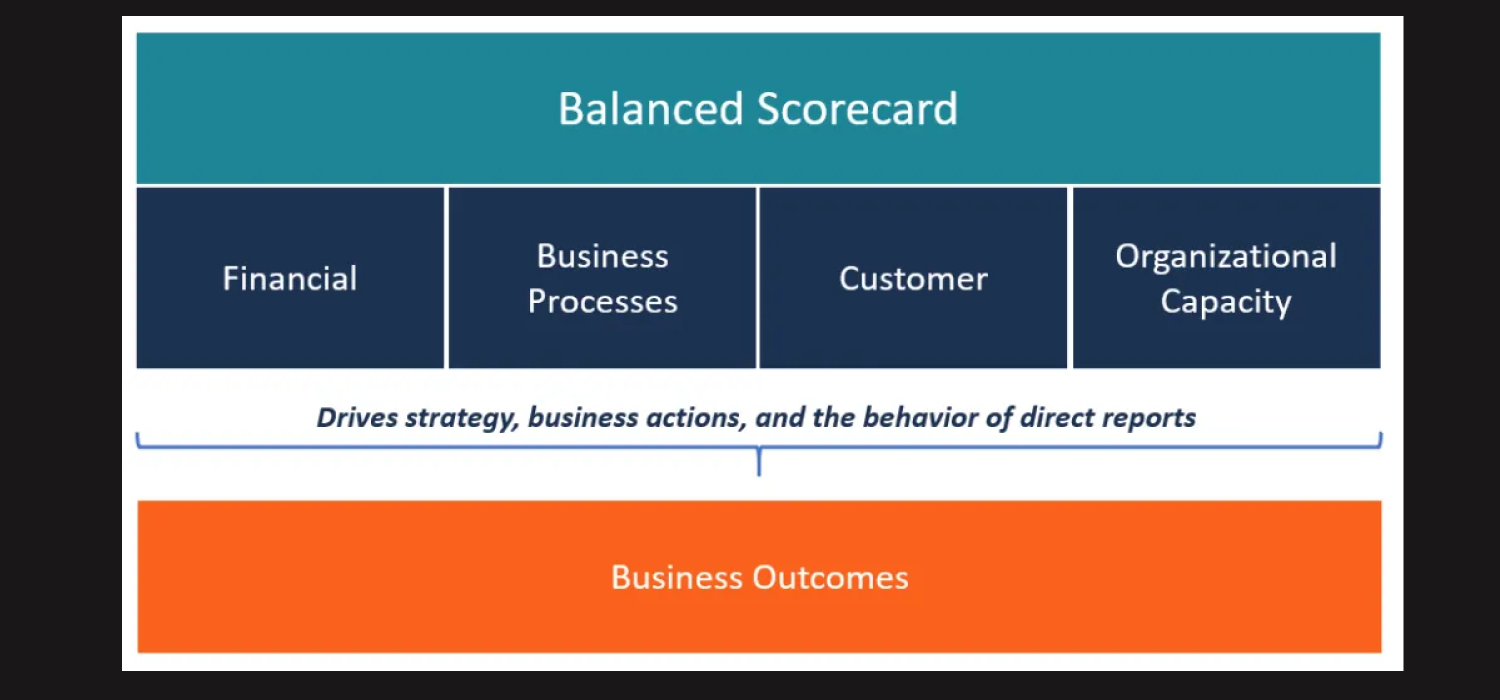Balanced Scorecard for Managers & Executives
The Balanced Scorecard is a strategic management framework that enables organizations to effectively measure and manage their performance across various perspectives.
It provides a balanced view of performance by considering both financial and non-financial indicators, allowing managers to evaluate progress towards strategic objectives.
Balanced Scorecard for Managers:
- Financial Perspective
– Revenue growth
– Profitability
– Cost control
– Return on investment (ROI)
– Cash flow management
- Customer Perspective
– Customer satisfaction
– Market share
– Customer retention
– Customer acquisition
– Brand perception
- Internal Processes Perspective
– Process efficiency
– Quality control
– Innovation and product development
– Supply chain management
– Operational excellence
- Learning and Growth Perspective
– Employee satisfaction
– Training and development
– Knowledge management
– Technological capabilities
-Organizational culture
- Objectives
– Clear and measurable goals in each perspective
– Aligned with the organization’s strategic vision and objectives
- Key Performance Indicators (KPIs)
– Specific metrics to track performance in each perspective
– Quantifiable measures of success
- Initiatives
– Action plans to improve performance and achieve objectives
– Projects and strategies to address areas of improvement
- Strategy Maps
– Visual representation of the cause-and-effect relationships between objectives
– Demonstrates how improvements in one perspective impact others and contribute to overall success
- Performance Monitoring
– Regular tracking and review of KPIs
– Assessing progress towards objectives
– Identifying areas in need of attention and enhancement
- Decision-making and Strategy Execution
– Using the Balanced Scorecard as a basis for informed decision-making
– Aligning resources and initiatives with strategic objectives
– Ensuring effective implementation of strategies and action plans
Balanced scorecard for executives
- Financial Perspective
– Revenue growth targets
– Profit margins and profitability goals
– Return on investment (ROI) objectives
– Cost reduction initiatives
– Cash flow management targets
- Customer Perspective
– Customer satisfaction and loyalty metrics
– Market share goals
– Customer acquisition and retention targets
– Brand perception and reputation measurements
– Product/service quality and innovation objectives
- Internal Process Perspective
– Operational efficiency improvements
– Process automation and optimization initiatives
– Quality control and defect reduction goals
– Employee productivity and engagement metrics
– Supply chain management and logistics optimization
- Learning and Growth Perspective
– Employee training and development programs
– Talent acquisition and retention strategies
– Knowledge management and innovation initiatives
– Organizational culture and employee satisfaction measurements
– Leadership development and succession planning goals
